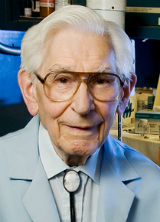Why Fried Foods Can Be Harmful

By Fred Kummerow, Ph.D.
There are problems with deep fat fried food that affect our nutrition. These problems occur because of chemical alterations in the fat that happen as a consequence of deep fat frying food.
This frying process is as follows:
1. Food picks up oxygen from the air during frying that negatively alters the fat composition.
2. The foods fried in these fats pick up those altered fats.
3. These altered foods have a direct and negative influence on the nutritional value of the fat.
The changes in the fat are dependent on at least four factors:
1. The length of time it was exposed to heat—in commercial operations, the length of time a food is fried leads to how much fat is absorbed on the “cooked” food item;
2. The temperature of the fat;
3. The exact composition of the fat used, such as corn oil, cottonseed oil, soybean oil, beef tallow, or hydrogenated fat, and
4. What is being fried, e.g., chicken or fish.
The longer the frying fat is heated, the greater the changes in that fat. Feeding animals fats fried at varying lengths of time led to very different outcomes in the health of those animals.
Those animals fed the fats fried the shortest period of time were healthier than those fed the fats fried for the longest times. Those fed fats heated at higher temperatures were not as healthy as those fed on fat heated to lower temperatures.
Also it was interesting that animals fed on heated margarine did not grow as well as those on fresh margarine and that their plasma cholesterol level increased. Those fed on heated butter oil grew as well as those on fresh butter oil.
Oil from commercial fat fryers was used in a set of experiments that clearly showed that poor nutrition resulted. This is important because used fat from commercial operations is typically collected and fed to animals, such as pigs, to provide energy for rapid growth.
When we conducted experiments feeding the commercially used fat for frying to rats, they did not do well. When we added protein to their diets, the effect of the “bad” heated fat was countered because the added protein provided more adequate nutrition.
We tried to fortify the diets with adequate vitamins, but that could not counter the growth-depressing effect of the heated oil. A few vitamins, such as riboflavin, helped a bit.
Fish already contain high amounts of polyunsaturated fat that are not present in the fat of chicken or beef. Thus, when fish are fried, the polyunsaturated fat in them can leak into the frying fat causing the fat to be changed more radically into a less healthy version. Chicken and hamburger have less of this polyunsaturated fat and thus are healthier choices to fry.
Eating excessive amounts of fried food also slows down digestion. People may get stomachaches as a result. As early as 1946, a link was shown between heated fats and cancer. What we don’t know yet is whether heated fats by themselves lead to cancer or whether the heated fat combined with specific foods cause cancer.
Animals fed heated fat combined with a known carcinogen developed cancer, whereas those fed fresh fat combined with a known carcinogen, did not. Thus the heated fat was a co-carcinogen.
Commercial frying of food has increased worldwide since our studies on heated fats. In Germany, fat fryers are required by law to test their frying fat for its freshness by a method approved by the German government. In the U.S. a test is also available but its use is not mandatory.
Free Radicals
Free radicals are produced from oxidized linoleic (n-6) and linolenic acid (n-3); they are fragments of unsaturated fatty acids. This is especially likely to happen when the essential fatty acids are heated, especially the n-3 variety. All oils change structures when they are heated, but those high in n-3 fatty acids have more problems than those high in n-6.
Free radicals provide another reason to avoid fried food. The first sign of fat becoming free radicals is that they are rancid, and they begin to smell “off” and their taste becomes bitter.
Roasted peanuts, for example, can become rancid and then shouldn’t be eaten. Free radicals are “bad” since they destroy vitamins A, D, C, and E, thus preventing these vitamins from doing positive things in the body.
Free radicals also destroy both the essential fatty acids and the essential amino acids. They oxidize the LDL into something called oxidized low density lipoproteins (oxLDL). These oxLDL are very powerful components in the blood that have been considered since about 1990 as involved in the development of heart disease.
The best way to avoid free radicals is simply not eating fried food nor any foods with oil that smells “off.”
Fred A. Kummerow, Ph.D.
This excerpt is from “Cholesterol is Not the Culprit. A Guide to Preventing Heart Disease” by Fred A. Kummerow, Ph.D. with Jean M. Kummerow, Ph.D. The book is fully referenced.
Photo of Dr Kummerow: L. Brian Stauffer
March, 2014






